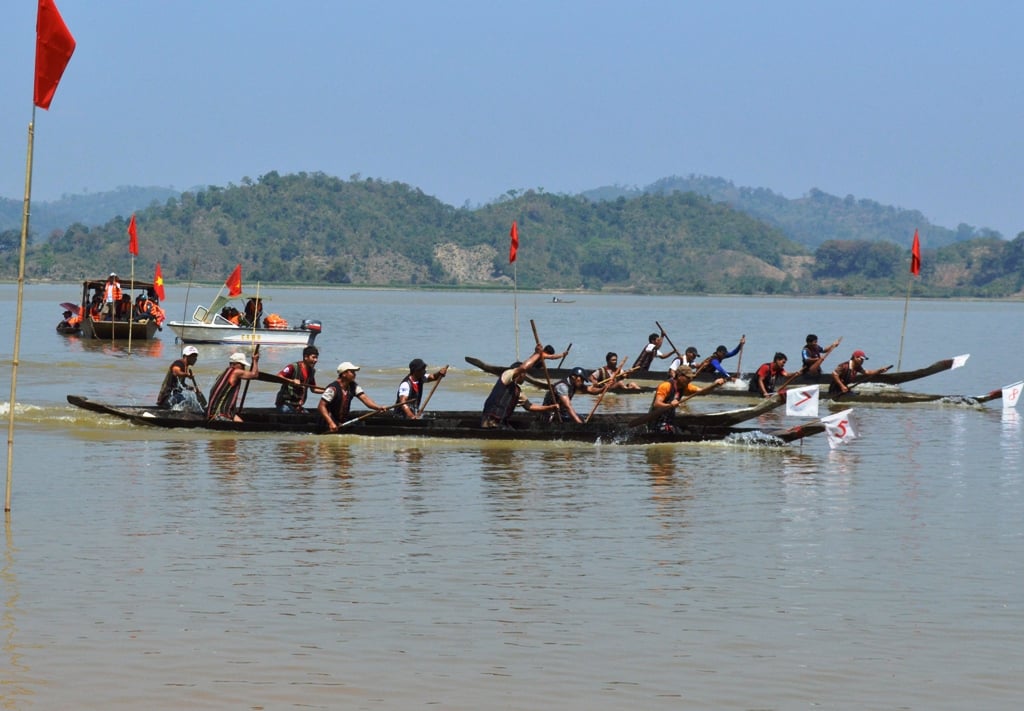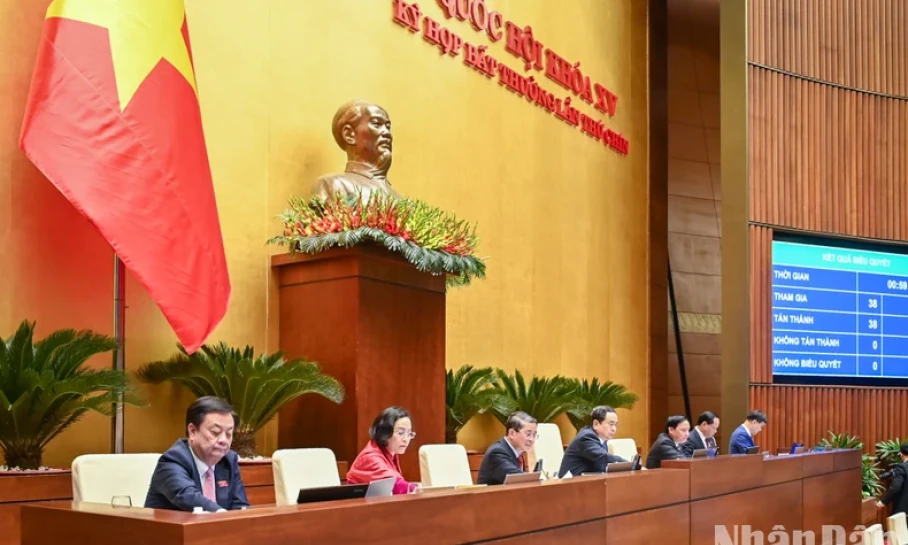The soldiers of the 36th Regiment had the initiative to use straw to weave a “spine” as a shield, helping them approach the stronghold more safely against direct fire. The 2m long, 1.5m diameter bundles of straw absorbed all the direct fire, ensuring the safety of those digging the battlefield behind it.
On the morning of April 17, the 36th Regiment's position formed three prongs to approach the fence of stronghold 206, which the enemy called Huguette 1, near the main airport. This was a very important stronghold in the northwest of the airport. If we captured this stronghold, our trenches would cut off the upper part of the airport, and the enemy's parachute position would be increasingly narrowed and possibly eliminated. Therefore, the enemy resisted very fiercely.

The bulletproof "bow" is vividly recreated at the Dien Bien Phu Historical Victory Museum. Photo: Hoa Binh Newspaper
At the 206 stronghold, our method of digging and attacking was ineffective because the enemy's gun emplacements were built very solidly. The soldiers of the 36th Regiment had the initiative to use straw to weave a "bow" as a shield, bringing the trenches from afar closer to the stronghold. The 2m long, 1.5m diameter straw blocks absorbed all the direct bullets, ensuring the safety of those digging the battlefield behind it.
Meanwhile, on the night of April 17, the trenches of Regiment 141 penetrated into the innermost fence of Base 105, and many sections of the fence were cut bare. The digging of the siege battlefield created conditions for our troops to attack and destroy the enemy base.
On April 15, 16, and 17, Bigeard mobilized three airborne battalions, the 1st, 2nd, and 6th, to launch an operation to relieve and resupply base 105. The legionnaires at this base not only lacked ammunition, but also drinking water. On the first day of arriving at base 105, the relief troops approached the newly appeared trenches on the airport and took four hours to cross. On the second and third days, the enemy faced a battlefield with layers of trenches and gun emplacements. In addition, the wreckage of an airplane still lying on the runway became a floating fortification that helped our troops place guns to sweep away the most eager legionnaires who were determined to charge forward.
The supply operation to base 105 brought Langlais greater losses in combat forces than the counterattacks to retake hill C1. At the end of the third day, De Castries ordered the commander of base 105, Bizard, to withdraw his troops there on the night of April 18. Bigeard - Deputy commander of the central area, gathered a force consisting mostly of paratroopers and legionnaires, along with two tanks, to open a path to pick up the retreating soldiers at base 105. But this army had lost its fighting strength in front of our trenches. After less than half an hour of firefight, Bigeard had to order the commander of base 105: "You can leave all the wounded behind, open a path to escape to Muong Thanh or surrender."
At this time, the trenches of the 165th Regiment from four directions penetrated inside the barbed wire fence of the 105th stronghold. The 15 gun emplacements at the front line were destroyed by the DKZ. Many fences were cut down. The enemy soldiers had no food or water, and if they stuck their heads out, they would be shot by our snipers.
THANH VINH/qdnd.vn
Source


































Comment (0)